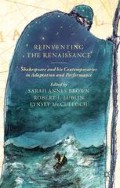Abstract
Édouard Lekston was born in 1976 at Chauny in the Picardie region in France. In 2001, he became a graduate of Paris’s École Supérieure des Arts Décoratifs. He has drawn since his childhood and has illustrated many children’s books in addition to exhibiting his drawings and serigraphs across France. He has also worked with the L’Avant-scène Théâtre publishing house and collaborated with the Centre Pompidou for the ‘Enchantez-vous’ Exhibition (2000). He thinks that drawing is a universal instinctive language that anyone can understand.
I was just thinking right now that, since these interviews began, I have been experiencing rather intense things with you.
(J. M. G. Le Clézio)2
William Shakespeare, The Tempest, ed. Virginia Mason Vaughan and Alden T. Vaughan (London: Thomson Learning, 2003), 2.2.88.
Access this chapter
Tax calculation will be finalised at checkout
Purchases are for personal use only
Preview
Unable to display preview. Download preview PDF.
Notes
My translation of ‘Je pensais, en ce moment, que, depuis le commencement de ces entretiens, j’ai vécu des choses assez intenses avec vous’, J. M. G. Le Clézio, Ailleurs. Entretiens sur France Culture avec Jean-Louis Ezine (Paris: Arléa, 2006), 98.
Samples of Lekston’s work have been published, with comments or interviews, in Shakespeare au XXème siècle: mises en scène, mises en perspective de King Richard II, ed. P. Drouet (Rennes: Presses Universitaires de Rennes, 2007), Les Cahiers Shakespeare en devenir/The Journal of Shakespearean Afterlives (http://shakespeare.edel.univ-poitiers.fr/) and The Spectacular In and Around Shakespeare, ed. P. Drouet (Newcastle: Cambridge Scholars Publishing, 2009).
For this subtitle I am indebted to Lawrence Grobel, ed., Al Pacino: In Conversation with Lawrence Grobel (New York: Simon Spotlight Entertainment, 2006). This interview was translated from the original French by Pascale Drouet.
William Shakespeare, Hamlet, ed. G. R. Hibbard (Oxford: Oxford University Press, 1994). All Hamlet quotations will be taken from this edition.
William Shakespeare, King Lear, ed. R. A. Foakes (London: Thomson Learning, 2007).
William Shakespeare, Macbeth, ed. Nicholas Brooke (Oxford: Oxford University Press, 1994). The list of the ingredients to be thrown into the cauldron is directly translated into French from Macbeth 4.1.5–34.
Ambroise Paré (1510–1590) was a French surgeon and anatomist considered to be one of the fathers of modern surgery. His drawings and descriptions of Siamese twins and other malformations from birth are to be found in his 1573 Des monstres et prodiges, later translated as On Monsters and Marvels, in his fourth chapter, entitled ‘Exemple de la trop grande quantité de semence’ (An Example of Too Great a Quantity of Seed), which is about multiple births and the generating of monsters. See Ambroise Paré, Des monstres et prodiges, ed. Jean Céard (Genève: Droz, 1971); Ambroise Paré, On Monsters and Marvels, trans. J. L. Pallister (Chicago, IL: University of Chicago Press, 1982). Lekston’s choice to illustrate Shakespeare’s ‘witch’s mummy’ (Macbeth, 4.1.23) as Siamese twins is reminiscent of Paré’s drawings and, what is more, it enhances the monstrous, hybrid quality of the weird sisters’ pot.
François Laroque, The Age of Shakespeare, trans. Alexandra Campbell (New York: Harry N. Abrams, 1993), 103.
Édouard Lekston has illustrated many children’s books including Peau d’âne (Paris: L’Avant-Scène Théâtre Jeunesse, 2002); Ésope au pays des philosophes (Paris: L’Harmattan, 2003); Le Fils de la paysanne et autres contes d’Algérie (Paris: L’Harmattan, 2004); Dix petits cochons noirs/Dis ti kochon nwe, Bilingue français-créole (Paris: L’Harmattan, 2004); Pierre de Lune, Bilingue français-arable (Paris: L’Harmattan, 2005); Les 7 frères de Finlande/Seitsemän veljestä Suomesta, Une adaptation des sept Frères d’Aleksis Kivi, Bilingue français-finnois (Paris: L’Harmattan, 2006).
Stephen Orgel, ‘Shakespeare Illustrated’, in The Cambridge Companion to Shakespeare and Popular Culture, ed. R. Shaughnessy (Cambridge: Cambridge University Press, 2007), 81.
Ibid., 74.
To get a substantial critical overview of Shakespearean illustration in the eighteenth and nineteenth centuries, see Stuart Sillars, Painting Shakespeare: The Artist as Critic, 1720–1820 (Cambridge: Cambridge University Press, 2006) and The Illustrated Shakespeare, 1709–1875 (Cambridge: Cambridge University Press, 2008).
Gilles Deleuze and Félix Guatarri, A Thousand Plateaus: Capitalism and Schiozophrenia, Trans. Brian Massumi (London: Continuum, 2008), 13.
Lekston’s work on Shakespeare obviously stands apart from illustrative comics trips such as Denis Deprez’s Othello (Paris: Éditions Casterman, 2004) and Daniel Casavane’s Macbeth (Frontignan, 6 Pieds Sous Terre édition, juin 2004).
The term is from Jonathan Sawday, in The Body Emblazoned: Dissection and the Human Body in Renaissance Culture (London: Routledge, 1996).
Ernest B. Gilman, ‘Richard II and the Perspectives of History’, Renaissance Drama vii (1976): 85–115. The ‘right view’ of English history presents Richard II’s deposition and murder as a welcome regeneration and a spiritual progress, whereas the ‘wry view’ presents it as a repetition of the sin of Cain, and as such part of a cycle of homicide.
Denis Cosgrove, ed., Mappings (London: Reaktion Books, 2002), 1–2.
Editor information
Editors and Affiliations
Copyright information
© 2013 Pascale Drouet
About this chapter
Cite this chapter
Drouet, P. (2013). ‘Four legs and two voices’: An Interview with Édouard Lekston. In: Brown, S.A., Lublin, R.I., McCulloch, L. (eds) Reinventing the Renaissance. Palgrave Macmillan, London. https://doi.org/10.1057/9781137319401_14
Download citation
DOI: https://doi.org/10.1057/9781137319401_14
Publisher Name: Palgrave Macmillan, London
Print ISBN: 978-1-349-33936-5
Online ISBN: 978-1-137-31940-1
eBook Packages: Palgrave Literature CollectionLiterature, Cultural and Media Studies (R0)

